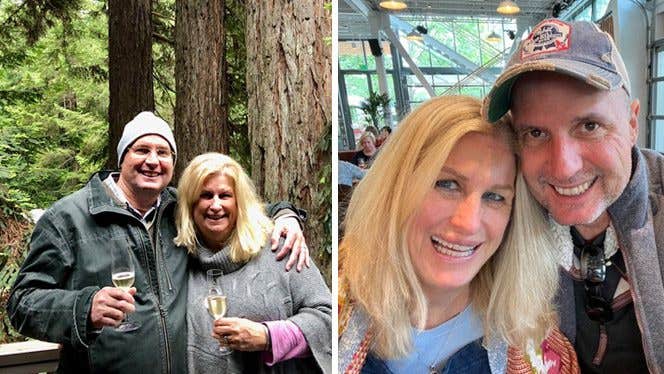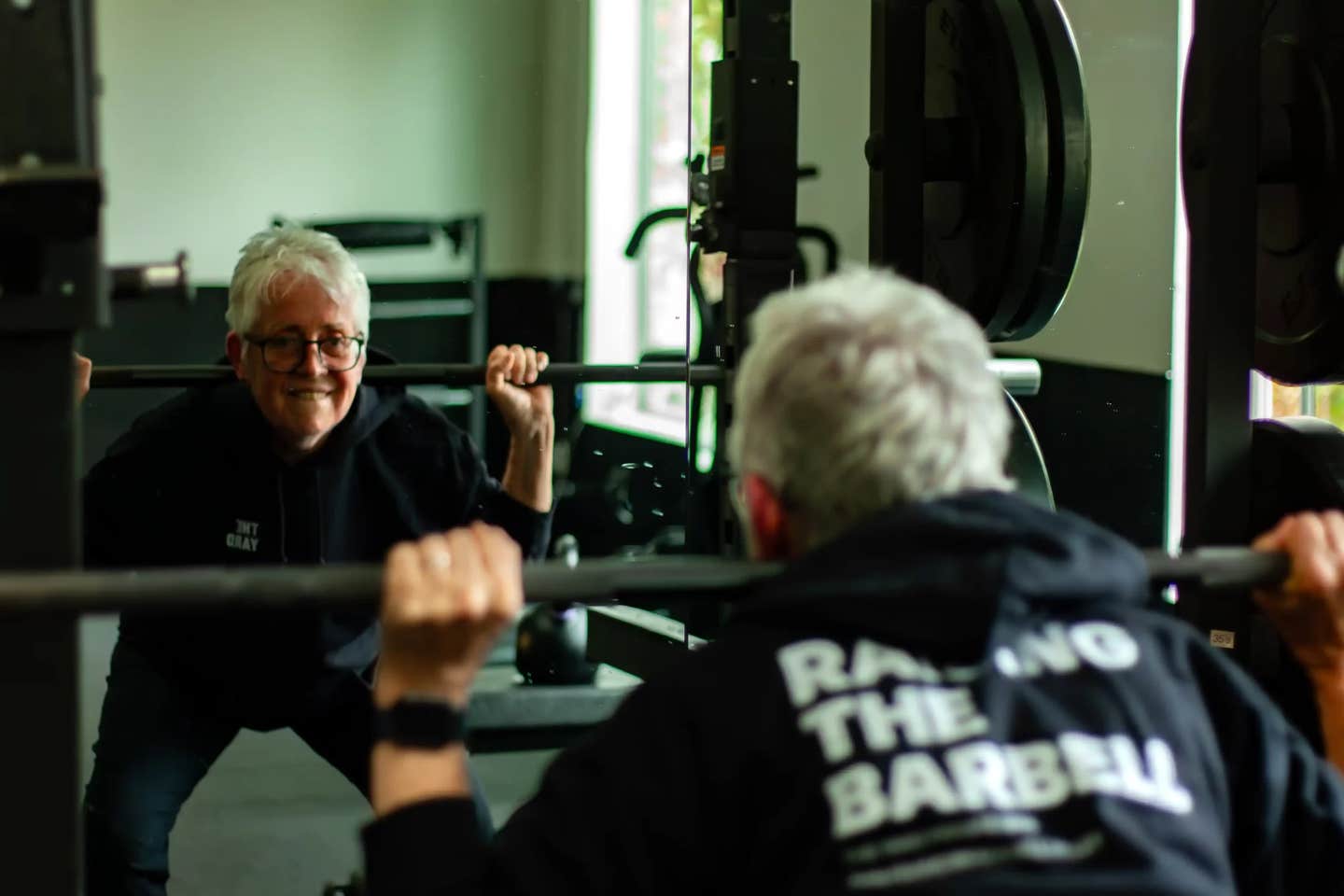
Decades of Chronic Joint Pain Gone Within Weeks on a Plant-Based Diet
By Cathy Downs-Phoenix,
My husband, Patrick, and I are both registered nurses working in acute care. While we each hold a master’s degree in nursing and have always been aware of the importance of nutrition to health, we didn’t prioritize eating well. I was a longtime vegetarian, but other than my not eating meat, we mostly followed the standard American diet (SAD). We ate out nearly every meal, ate when we weren’t hungry, and definitely consumed a lifetime’s worth of added fat and sugar. We both had chronic joint pain, and I long suffered from often-debilitating back pain.
In 2018, after a wonderful trip to Italy, I was looking through my many gourmet cookbooks preparing to cook some Italian favorites. Then my copy of The Forks Over Knives Plan, which I’d bought years earlier, fell out of the cabinet. I paused, and I decided to sit down and really read it for the first time.
Once I finished, it was like I’d had an epiphany! I asked Patrick to try a whole-food, plant-based (WFPB) diet with me for six weeks, because I knew it would be too challenging to do on my own. He read the book and wholeheartedly agreed to the plan. We watched the Forks Over Knives documentary again, and then found The Game Changers. We were inspired and ready.
Kitchen Makeover
First, we purged our refrigerator and pantry of everything that wasn’t WFPB. I cannot emphasize how important this step was. It is written about in many WFPB stories and books for a reason. Transforming our kitchen into a healthy environment really helped strengthen our sense of commitment and gave us a positive outlook.
We started the new diet on a Sunday. I made some basic Forks Over Knives recipes with success. At first, we both felt hungry. Eating the SAD way—or as we call it, “eating with the English” (an inside joke from an old movie called Witness)—masks the true flavors that exist naturally in whole plant foods. Eating ultraprocessed foods confounds our bodies and brains, making us addicted to salt, fat, and sugar, so all we do is crave more; meanwhile, we’re robbed of crucial nutrients.
But after a few days, our bodies adapted to the new way of eating. Soon we were snacking on fruit and veggies and reveling in their deliciousness. We were completely satiated, and our energy levels were increasing. Best of all, the chronic pain dissipated within a few weeks. Sit on that for a moment: We were nearing retirement age, and aches and pains that we had carried with us for decades seemed to just vanish within weeks!
I ordered Darshana Thacker Wendel's Flavor! cookbook, and found her recipes and general approach to cooking life-changing. She is a rock star, and I’m such a fan.
We had two slips during the first couple of years, succumbing to pressure from well-intentioned family and friends to have that piece of cake at a wedding, etc. We don’t regret the slips, because they only served to make us feel more committed to the WFPB lifestyle.
Stronger Than Ever, Together
Today, we are stronger than ever. I am lighter, no longer limited by debilitating back pain. We lift weights, work out with the vigor of people 20 years younger, and sleep great. And we’re certainly happier.
We spent decades not being the best stewards of our bodies or health. Now we live happier, more even-keeled lives as WFPB people. As far as “eating with the English”—going out and enjoying a normal life—we do just fine. We’ve found that eating WFPB has greatly decreased our desire to eat out and to drink alcohol.
We also feel passionate about doing our part as climate activists by choosing foods that are not only healthier for us but also healthier for the planet. Even though we’d been activists for years, it wasn’t until we went WFPB that we felt we were really doing the work.
We’ve both incorporated the WFPB lifestyle into our nursing practice, and we’ve cooked for gatherings to help others better understand their options for maximum health. I have attended several plant-based summits and highly encourage checking those out. I’ve also created WFPB recipes, which I share online, and our physician has shared them with other patients.
While this may sound silly, adopting a WFPB lifestyle is like reversing time. We truly feel younger, laugh more, and have more vigor than at any time in our lives.
My Advice
If you're looking to improve your health with a WFPB lifestyle, here are my three tips:
- Invest in your self-care as much as you can. Training with an excellent personal trainer really made a difference for us. It is something I can’t imagine living without, and I am grateful for the muscle strength and increased mobility!
- Find a physician who promotes WFPB lifestyle. Ours does, and working with him during our journey has made a huge, positive impact. There are emerging MDs all over the country now who are WFPB forward in their patient treatment.
- Give yourself permission to be the strongest, healthiest, and happiest version of yourself!
Ready to get started? Check out Forks Meal Planner, FOK’s easy weekly meal-planning tool to keep you on a healthy plant-based path. To learn more about a whole-food, plant-based diet, visit our Plant-Based Primer.
Has a whole-food, plant-based diet impacted your life?
We would love to hear about it!
SHARE YOUR STORY
Join our mailing list
Get free recipes and the latest info on living a happy, healthy plant-based lifestyle.
By providing your email address, you consent to receive newsletter emails from Forks Over Knives. We value your privacy and will keep your email address safe. You may unsubscribe from our emails at any time.
